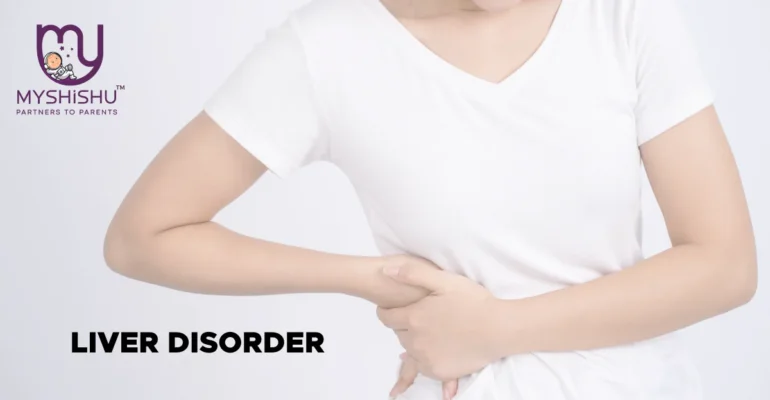Intrahepatic Cholestasis: A Comprehensive Guide
Intrahepatic Cholestasis: A Comprehensive Guide
Intrahepatic Cholestasis of Pregnancy (ICP) poses a unique challenge to expectant mothers, impacting both maternal well-being and fetal development. This comprehensive guide delves into the rare liver disorder, unraveling its complexities. From symptoms like intense itching to potential risks such as preterm birth, we navigate through diagnosis, causes, and management strategies. Empowering both mothers and healthcare professionals, this blog sheds light on ICP, fostering awareness to ensure timely intervention. Understanding the nuances of ICP is crucial for a smoother pregnancy journey, emphasizing the significance of recognition, diagnosis, and effective management.
Introduction
Pregnancy is a miraculous journey, yet it brings forth challenges, and one such hurdle is intrahepatic cholestasis of pregnancy (ICP). This rare liver disorder, though infrequent, demands attention due to its potential impact on both mother and child. As we embark on this exploration, we aim to dissect the intricacies of ICP. From the onset of intense itching to the risks it poses during pregnancy, this blog is a compass guiding you through symptoms, causes, diagnosis, and management. By navigating the landscape of ICP, we equip expectant mothers and healthcare professionals with knowledge vital for informed decision-making.
What is Intrahepatic Cholestasis of Pregnancy?
Intrahepatic Cholestasis of Pregnancy (ICP) is a distinctive liver disorder affecting pregnant women characterized by disrupted bile flow, leading to an accumulation of bile acids in the bloodstream. This condition typically surfaces in the later stages of pregnancy, manifesting primarily as severe itching, particularly on the hands and feet. The hallmark symptom, known as pruritus, becomes increasingly pronounced, often causing distressing sleep disturbances. Beyond itching, additional indicators include dark urine, pale stools, and jaundice. Understanding the nature of ICP is essential for timely intervention and effective management, as this condition not only affects the expectant mother but also carries potential risks for the developing fetus.
What Happens If I Have Cholestasis While Pregnant?
If you are diagnosed with intrahepatic cholestasis of pregnancy (ICP), the repercussions extend beyond mere discomfort. ICP’s hallmark symptom, intense itching, stems from elevated bile acid levels in the bloodstream due to impaired bile flow. This itching, especially on hands and feet, can be relentless and disrupt sleep, impacting the overall quality of life for expectant mothers. However, the implications of ICP go beyond discomfort. Elevated bile acid levels may pose risks to the developing fetus, including preterm birth, fetal distress, and meconium staining of the amniotic fluid. Recognizing and addressing ICP promptly is crucial to mitigating these potential complications and ensuring a healthier outcome for both the expectant mother and the unborn child.
How common is cholestasis in pregnancy?
Intrahepatic Cholestasis of Pregnancy (ICP) is relatively rare, occurring in approximately 1 to 2 pregnancies per 1,000. While not a common occurrence, awareness, and timely intervention are essential due to the potential risks associated with this liver disorder.
Symptoms and Causes
What is the main cause of cholestasis in pregnancy?
The precise cause of intrahepatic cholestasis of pregnancy (ICP) remains elusive, and it is likely influenced by a combination of genetic and environmental factors. Genetic predisposition plays a role, as women with a family history of ICP or liver disorders are at a higher risk. Hormonal changes during pregnancy, particularly elevated levels of estrogen and progesterone, may also contribute to impaired bile flow. Additionally, environmental factors such as geography, with a higher prevalence observed in certain regions, suggest a potential role for environmental triggers.
The intricate interplay of these elements likely underlies the development of ICP. Understanding these contributing factors is crucial for healthcare professionals to tailor effective management strategies and for expectant mothers to navigate their pregnancy journey with informed awareness and proactive care.
Intrahepatic Cholestasis of Pregnancy (ICP) presents a distinctive set of symptoms, the most notable being intense itching, medically referred to as pruritus. This itching tends to concentrate on the hands and feet and can be particularly disruptive, often intensifying at night and affecting the overall quality of sleep. The hallmark of pruritus is attributed to elevated bile acid levels in the bloodstream due to impaired bile flow.
Accompanying pruritus, expectant mothers with ICP may notice dark urine, a manifestation of increased bilirubin levels. Additionally, pale-colored stools may be observed, indicating reduced bile flow. These symptoms collectively signal potential liver dysfunction and impaired bile processes. In some cases, jaundice, characterized by a yellowish discoloration of the skin and eyes, may also manifest.
symptoms of intrahepatic cholestasis of pregnancy (ICP):
- Pruritus (Intense Itching): The hallmark symptom of ICP is intense itching, medically known as pruritus. This itching is particularly concentrated on the hands and feet and can be debilitating for expectant mothers. The severity often increases at night, leading to sleep disturbances and overall discomfort.
- Dark Urine: ICP can cause an increase in bilirubin levels, a substance formed during the normal breakdown of red blood cells. When bilirubin is not properly processed by the liver, it can lead to dark-colored urine, serving as a visible indicator of potential liver dysfunction.
- Pale-Colored Stools: Reduced bile flow, a characteristic of ICP, can result in pale or clay-colored stools. Bile, which is responsible for giving stools their characteristic brown color, may be insufficiently reaching the intestines, causing this noticeable change in stool color.
- Jaundice: In some cases, ICP may progress to jaundice, a condition marked by a yellowish discoloration of the skin and eyes. Jaundice occurs when bilirubin builds up in the bloodstream, affecting the normal coloration of bodily tissues.
These symptoms collectively form a diagnostic profile for intrahepatic cholestasis of pregnancy, and their recognition is crucial for expectant mothers to seek prompt medical attention and appropriate management.

What week does cholestasis of pregnancy start?
Intrahepatic Cholestasis of Pregnancy (ICP) typically manifests in the third trimester, commonly starting around the 28th week of pregnancy. Early recognition and monitoring are crucial for effective management.
Diagnosis and Tests for Intrahepatic Cholestasis of Pregnancy (ICP):
Timely and accurate diagnosis of intrahepatic cholestasis of pregnancy (ICP) is crucial for effective management. Healthcare professionals employ a combination of clinical assessment and specialized tests to confirm the presence of ICP. Here’s an overview of the diagnostic process:
- Clinical Assessment:
- Medical History: Gathering information on the patient’s medical history, especially any family history of liver disorders or previous occurrences of ICP, is a crucial initial step.
- Symptom Evaluation: The presence and intensity of symptoms, particularly pruritus (intense itching), dark urine, pale stools, and jaundice, are assessed.
- Blood Tests:
- Liver Function Tests (LFTs): Blood tests measuring levels of liver enzymes such as alanine aminotransferase (ALT) and aspartate aminotransferase (AST) help evaluate liver function.
- Bile Acid Levels: Measuring serum bile acid levels is a key diagnostic marker for ICP. Elevated bile acids in the bloodstream indicate impaired bile flow.
- Fetal Monitoring:
- Non-Stress Test (NST): Monitoring the fetal heart rate in response to fetal movements helps assess the well-being of the unborn child. In ICP, fetal distress is a concern and NSTs aid in early detection.
- Ultrasound Imaging:
- Abdominal Ultrasound: While not a definitive test for ICP, an ultrasound can be performed to rule out other liver conditions and assess the overall health of the liver and gallbladder.
- Biophysical Profile (BPP):
- Assessment of Fetal Well-Being: In some cases, a BPP may be recommended to evaluate various fetal parameters, including fetal movement, muscle tone, and amniotic fluid volume.
- Genetic Testing:
- Identification of Predisposition: Genetic testing may be considered, especially in cases where there is a family history of ICP or other liver disorders, to identify any genetic predisposition.
Early detection through these diagnostic measures allows for timely intervention and management of intrahepatic cholestasis during pregnancy, minimizing potential risks to both the expectant mother and the developing fetus.
How is cholestasis of pregnancy diagnosed?
Diagnosing intrahepatic cholestasis of pregnancy (ICP) involves a multifaceted approach. Healthcare professionals begin with a thorough clinical assessment, considering the patient’s medical history and evaluating symptoms such as intense itching, dark urine, pale stools, and jaundice. Specialized blood tests, including liver function tests (LFTs) and bile acid level measurements, play a pivotal role in confirming the diagnosis. Fetal monitoring through non-stress tests (NSTs) assesses the well-being of the unborn child. Ultrasound imaging and, in some cases, genetic testing contribute to a comprehensive diagnostic picture. Early and accurate diagnosis enables healthcare providers to implement timely interventions, optimizing outcomes for both mother and baby.
Management and Treatment of Intrahepatic Cholestasis of Pregnancy (ICP):
Effectively managing intrahepatic cholestasis of pregnancy (ICP) involves a combination of medical interventions and lifestyle modifications aimed at alleviating symptoms and minimizing risks. Here’s a comprehensive overview of the management and treatment strategies:
- Ursodeoxycholic Acid (UDCA):
- Prescription Medication: UDCA is commonly prescribed to reduce bile acid levels in the bloodstream, mitigating the intensity of pruritus and potentially improving liver function.
- Monitoring and Fetal Assessment:
- Regular check-ups: Close monitoring of the expectant mother’s health, including liver function tests and bile acid levels, ensures timely adjustments to the treatment plan.
- Non-Stress Tests (NSTs): Periodic NSTs assess the well-being of the fetus, helping identify and address any potential concerns promptly.
- Symptom Management:
- Cool Compresses and Soothing Baths: To alleviate itching, using cool compresses and taking soothing baths with mild, fragrance-free products can provide relief.
- Avoidance of triggers:
- Temperature Control: Minimizing exposure to hot temperatures, including hot baths and showers, can help reduce the intensity of itching.
- Early Delivery Consideration:
- In Severe Cases: In consultation with healthcare providers, early delivery may be considered in cases of severe ICP, balancing the risks to both the mother and the unborn child.
- Patient Education:
- Empowering Expectant Mothers: Educating mothers about the condition, its symptoms, and the importance of adhering to the prescribed management plan enhances their ability to actively participate in their care.
- Supportive Care:
- Emotional Support: Acknowledging the psychological impact of ICP and providing emotional support through counseling or support groups can be beneficial.
Expectant mothers with ICP must maintain open communication with their healthcare team, actively participate in their care, and adhere to prescribed medications and lifestyle modifications. The collaborative efforts of healthcare professionals and expectant mothers are essential for effectively managing intrahepatic cholestasis during pregnancy and optimizing outcomes.
Complications Associated with Intrahepatic Cholestasis of Pregnancy (ICP):
Intrahepatic Cholestasis of Pregnancy (ICP) poses potential complications for both the expectant mother and the developing fetus. Understanding these complications is crucial for comprehensive care and timely interventions. Key complications include:
- Preterm Birth:
- ICP increases the risk of preterm birth, where the baby is born before completing a full-term gestation. Early delivery may be recommended in severe cases to prevent further complications.
- Fetal Distress:
- Elevated bile acid levels can lead to fetal distress, affecting the unborn child’s heart rate. Regular fetal monitoring, especially through non-stress tests, helps identify and address fetal well-being concerns.
- Meconium Staining:
- ICP may result in meconium staining of the amniotic fluid, a sign that the unborn baby has passed stool before birth. Meconium staining can pose respiratory risks for newborns.
- Respiratory Distress Syndrome (RDS):
- Preterm birth associated with ICP increases the risk of respiratory distress syndrome in newborns, where the lungs are insufficiently developed, leading to breathing difficulties.
- Stillbirth (Rare):
- While rare, severe cases of ICP have been associated with an increased risk of stillbirth. Close monitoring and timely interventions aim to minimize this risk.
In addition to the inherent complications associated with intrahepatic cholestasis of pregnancy (ICP), there are noteworthy associations with other pregnancy-related conditions, amplifying the complexity of care.
- Gestational Diabetes:
- Association: Research suggests a potential association between ICP and gestational diabetes, another common pregnancy-related condition.
- Combined Risks: The coexistence of ICP and gestational diabetes may heighten the overall risks for adverse outcomes, necessitating vigilant monitoring and tailored management plans.
- Preeclampsia:
- Independent Conditions: ICP and preeclampsia are distinct conditions, but they can co-occur in some pregnancies, especially when there are underlying risk factors.
- Combined Risks: Expectant mothers with both ICP and preeclampsia may face compounded risks, emphasizing the importance of thorough antenatal care and monitoring.
Understanding these interconnections is pivotal for healthcare providers in designing comprehensive care plans for expectant mothers with intrahepatic cholestasis of pregnancy. Collaborative management that addresses the unique challenges posed by these conditions collectively ensures the best possible outcomes for both mother and baby. Regular antenatal assessments and proactive interventions play a crucial role in mitigating the compounded risks associated with the convergence of ICP, gestational diabetes, and preeclampsia.
What foods should I avoid if I have cholestasis during pregnancy?
Expectant mothers with intrahepatic cholestasis during pregnancy should consider minimizing foods high in saturated fats and cholesterol. This includes avoiding fried and processed foods and opting for a balanced diet rich in fruits, vegetables, and whole grains. Consultation with a healthcare professional or a nutritionist for personalized dietary guidance is advisable.
Can cholestasis of pregnancy be prevented?
Intrahepatic cholestasis during pregnancy cannot be entirely prevented, as its exact cause remains unclear. However, early detection, monitoring, and adherence to recommended lifestyle changes can mitigate its impact.
Prevention
Preventing intrahepatic cholestasis during pregnancy remains challenging due to its unclear etiology. However, maintaining a healthy lifestyle, including a balanced diet, regular exercise, and managing underlying conditions, may contribute to overall well-being. Early detection and proactive management play pivotal roles in minimizing the potential risks associated with this condition.
When to seek the health care provider
Expectant mothers experiencing symptoms such as intense itching, dark urine, pale stools, or jaundice, especially in the later stages of pregnancy, should promptly seek their healthcare provider. Early detection and intervention are crucial for managing intrahepatic cholestasis during pregnancy and ensuring the best possible outcomes.
Additional Common Questions
-
How serious is cholestasis in pregnancy?
If you have ICP, you and your baby are at increased risk of having complications, including Premature birth. This is a birth that happens too soon, before 37 weeks of pregnancy. Babies born this early may have more health problems or need to stay in the hospital longer than babies born later.
-
How do you treat intrahepatic cholestasis during pregnancy?
Creams, such as aqueous cream with menthol, are safe to use in pregnancy and can provide some relief from itching. A medicine called ursodeoxycholic acid (UDCA) can be prescribed to try to relieve itching.
-
Is delivery by 37 weeks necessary for cholestasis of pregnancy?
While there is no evidence to point out that in mild cases it is safe to prolong the pregnancy to 39 0/7 weeks gestation, earlier delivery is still an option in a well-counseled patient who is aware of all of the risks.
-
When does ICP start in pregnancy?
Classically, intrahepatic cholestasis of pregnancy (ICP) presents in the late second trimester to the early third trimester. The most common complaint is generalized intense pruritus, which usually starts after the 30th week of pregnancy.
-
Can cholestasis affect my baby?
Although relatively harmless for the expectant mother, ICP poses a significant risk to the unborn child. Preterm birth, meconium excreted in the amniotic fluid, respiratory distress syndrome, fetal distress, and abrupt intrauterine fetal death are all risks seen in this disorder.
Conclusion
In navigating the complexities of intrahepatic cholestasis of pregnancy (ICP), awareness and understanding become invaluable allies. From recognizing symptoms to exploring potential complications and management strategies, this comprehensive guide aims to empower expectant mothers and healthcare professionals alike. While ICP’s prevention remains elusive, early detection and proactive care are pivotal. Collaboration between healthcare providers and pregnant individuals, coupled with a commitment to a healthy lifestyle, enhances the ability to navigate the challenges of ICP, ensuring a smoother journey and optimal outcomes for both mother and child. Stay informed, seek timely care, and embrace the journey with confidence.










